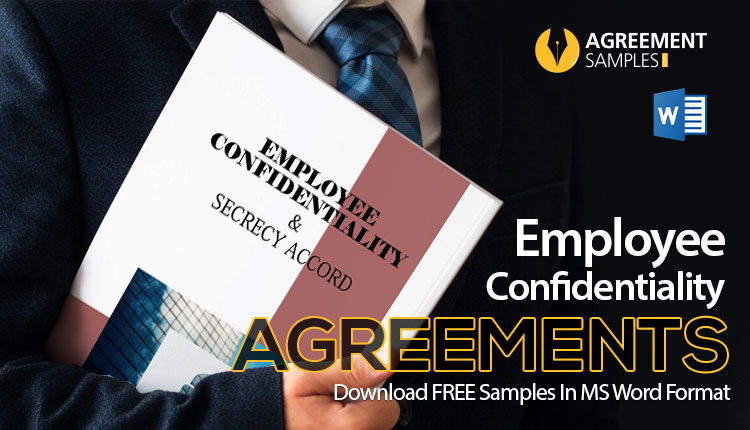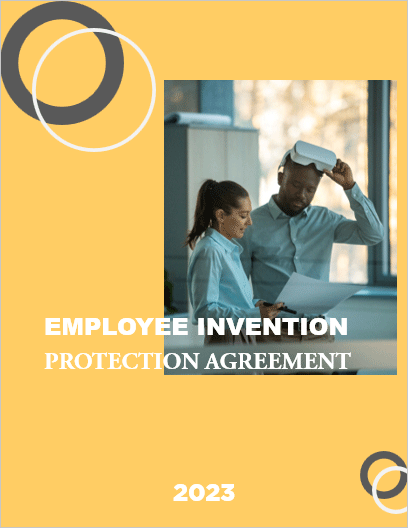In the business world, keeping secrets is a big deal. Employee Confidentiality Agreements, or Non-Disclosure Agreements, are like the locks that keep important info safe. We’ve put together a bunch of them, more than 15, and you can grab them for free. Whether you’re a boss wanting to make a custom agreement or an employee curious about the rules, this is where you’ll find what you need. It’s a way to make sure everyone at work is on the same page about what should stay private.
Are you eager to fortify the confidentiality of sensitive information in your workplace? You’re just a click away from taking a significant step in safeguarding your business and preserving the trust of your employees. Our meticulously crafted library of 15+ Employee Confidentiality Agreements is at your disposal, and it won’t cost you a dime.

Download one of our professionally designed templates now, and initiate the process of reinforcing confidentiality within your organization. Start protecting your trade secrets, proprietary data, and intellectual assets today to ensure the integrity and security of your company for years to come.
It’s like a promise that employees make to keep things like secret recipes, customer lists, and important business strategies safe and not share them with anyone else.

This way, everyone feels secure that their ideas, projects, and company secrets won’t be spilled to the world.

It’s there to make sure that if employees come up with cool new ideas or inventions while they’re working for the company, everyone knows who owns those ideas.

Think of it as a promise that your company won’t share your details, like your address or health records, with anyone.

This is a bit like a handshake agreement that employees make with their company. It’s all about promising not to steal away their coworkers or customers.

It’s where employees agree not to work for a rival company or start their own competing business while they’re still working for their current employer.

This is like a clear agreement between you and your employer about who owns the cool stuff you create at work.


It covers what’s confidential, the dos and don’ts, and what happens if someone spills the beans.

It spells out what information is super hush-hush and shows them how to handle it properly.

A formal agreement is where employees agree not to cut deals or make agreements with the company’s contacts or partners without the company knowing.

It’s a way to ensure that employees won’t try to work around the company to make deals or do business directly with the company’s contacts or partners they’ve learned about while working there.

The Compact is like a handbook for employees, explaining how to handle company and personal data carefully.

It’s there to make sure that if you ever notice something fishy or wrong happening at your workplace, you can speak up without worrying about any negative consequences.

Think of it as your membership into the “guardian of secrets” club at work, where discretion and trustworthiness are the key.

It’s like a friendly agreement to help everyone stay focused on their common mission and prevent any poaching shenanigans.

Okay, let’s break this down in simple terms. Employee Confidentiality Agreements are promises to keep work secrets safe. They’re like trust-building tools in the professional world, helping everyone understand how to handle important, private stuff.
You might hear them called Non-Disclosure Agreements (NDAs), but don’t let the fancy names scare you. These are like shields that protect your work secrets from getting out. Whether it’s super-secret business plans or customer info, these agreements make sure they stay confidential.
In the next part, we’ll talk about why these agreements matter and how they help build trust and keep things legal and secure at work.
Now, why are these agreements so great? Well, first of all, they help you stay on the right side of the law. They’re designed to meet legal requirements, so you’re covered there. Plus, they’re like a shield for your company’s confidential data. They stop it from accidentally getting out into the world, whether it’s trade secrets or customer lists.
But it’s not just about legality and protecting secrets. It’s also about creating trust in your workplace. When employees know their sensitive info is respected and safe, they’re more likely to feel comfortable and open in the workplace. It’s a win-win situation for everyone involved.
So, in a nutshell, these free Employee Confidentiality Agreements are your go-to for keeping things legit, securing your company’s secrets and making your workplace a place of trust and integrity.
You know, employee confidentiality is like the superhero cape for a company. It’s a big deal for success, and here’s why:
In simple terms, employee confidentiality isn’t just a business practice; it’s a foundation for a thriving business. It keeps your special secrets safe, shields your innovative treasures, builds trust with customers, earns you a reputation for trustworthiness, and keeps legal worries at bay.
In the age of digital communication and remote work, maintaining confidentiality comes with both challenges and innovative solutions:
In this digital age, maintaining confidentiality is both crucial and complex. By understanding these challenges and adopting innovative solutions, businesses can navigate the intricacies of digital communication and remote work while keeping sensitive information secure.
Some tips for maintaining employee trust while upholding the need for confidentiality, along with suggestions for unique content:
By providing content that explores these tips and ideas, you can help organizations navigate the fine line between confidentiality and trust, ultimately fostering a positive workplace culture.